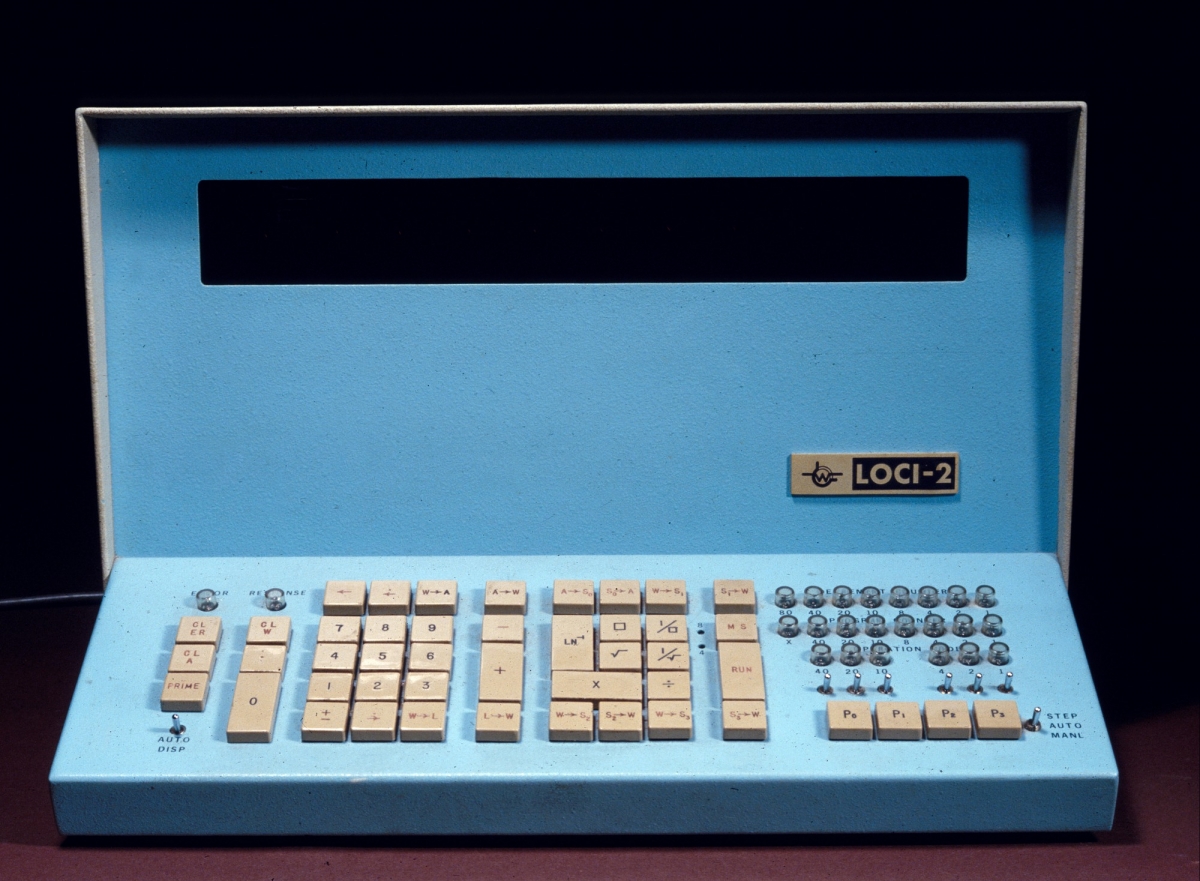- About MAA
- Membership
- MAA Publications
- Periodicals
- Blogs
- MAA Book Series
- MAA Press (an imprint of the AMS)
- MAA Notes
- MAA Reviews
- Mathematical Communication
- Information for Libraries
- Author Resources
- Advertise with MAA
- Meetings
- Competitions
- Programs
- Communities
- MAA Sections
- SIGMAA
- MAA Connect
- Students
- MAA Awards
- Awards Booklets
- Writing Awards
- Teaching Awards
- Service Awards
- Research Awards
- Lecture Awards
- Putnam Competition Individual and Team Winners
- D. E. Shaw Group AMC 8 Awards & Certificates
- Maryam Mirzakhani AMC 10 A Awards & Certificates
- Two Sigma AMC 10 B Awards & Certificates
- Jane Street AMC 12 A Awards & Certificates
- Akamai AMC 12 B Awards & Certificates
- High School Teachers
- News
You are here
Mathematical Treasure: Wang Loci-2 Programmable Calculator

Wang LOCI-2 Desktop Programmable Calculator, 1965 or later, Smithsonian Institution negative number 80-14510.
By the early 1960s, the invention of the transistor made it possible to build electronic calculators that would fit on a desktop. A few of these—such as this Wang LOCI-2—could be programmed. An Wang, the inventor of the calculator, was a native of Shanghai, immigrated to the United States after World War II, studied computer science at Harvard University, and worked at the Harvard Computation Laboratory. He started his own business in 1951, producing magnetic core memories and other electronic equipment on order. The LOCI or “logarithmic calculating instrument” was the first product marketed by Wang Laboratories. Two versions of the machine were announced: the LOCI-1, which was not programmable, and the LOCI-2, which was. In the 1970s, handheld electronic calculators largely displaced desktop calculators. Wang and his colleagues turned their attention to the design of minicomputers.
For information about other desktop electronic calculators in the collections of the Smithsonian’s National Museum of American History, see http://americanhistory.si.edu/collections/object-groups/desk-calc.
Peggy A. Kidwell (National Museum of American History, Smithsonian Institution), "Mathematical Treasure: Wang Loci-2 Programmable Calculator," Convergence (October 2014)




